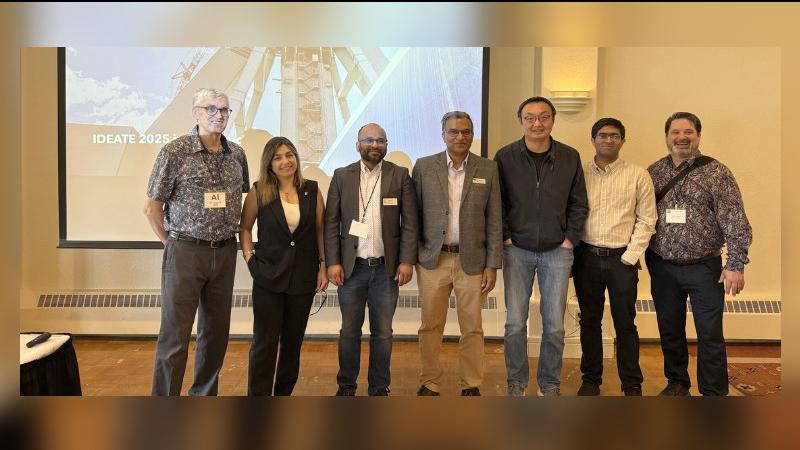Science
SaskPolytech Launches $900,000 Initiative to Innovate Mining Byproducts

SaskPolytech has initiated three groundbreaking research projects aimed at finding innovative uses for mining byproducts, particularly in the potash industry. Announced on March 15, 2024, these projects have been made possible through a substantial investment of $900,000 from the federal government via PrairiesCan. The initiative underscores Canada’s commitment to addressing the environmental challenges posed by mining operations.
Canada is home to 11 potash mines, all located in Saskatchewan. While potash is primarily utilized as a fertilizer, it has diverse applications, including in pharmaceuticals, ceramics, and as an alternative to de-icing salt. However, the mining process generates tailings—piles of leftover material high in salt. These tailings can create environmental hazards, particularly when rainwater mixes with them, forming brine that can damage soil and water sources.
Eleanor Olszewski, Minister responsible for Prairies Economic Development Canada, emphasized the significance of this sector, stating, “Canada has what the world wants — and our mining and critical minerals sector is ready to deliver.” She noted that the initiatives will foster innovation, support job creation, and contribute to a robust economy.
Research Projects Target Sustainable Solutions
The three projects will explore different methods to repurpose mining byproducts effectively. One project will investigate the potential of combining potash tailings, fly ash, and kraft lignin to create sustainable building materials. Fly ash, a byproduct of coal combustion, is already used in concrete to enhance its strength and durability. Kraft lignin, derived from the kraft pulping process, serves as a versatile material in composites and can replace fossil fuels.
Dr. Abu Kamal, a researcher at SaskPolytech, leads this project. He will also supervise a second initiative that focuses on the application of potash tailings in composting, which aims to return essential nutrients back to the environment.
The third project will examine the use of electromagnetic frequencies to develop an imaging system capable of penetrating beyond the visible layers of a potash mine. This research aims to identify how different soil types interact with electromagnetic radiation and to determine the most effective frequency ranges for mining applications. Dr. Abdul Raour, another prominent researcher at SaskPolytech, will assist in this effort.
Collaborative Efforts Across Western Canada
These projects are part of a broader collaboration involving multiple polytechnical institutions across western Canada. The initiative, known as the Prairie Polytechnic Innovation Network Accelerating Commercialization for Local Ecosystems, or P2INACLE, includes partners such as NAIT, SAIT, Northwestern Polytechnic, Red Deer Polytechnic, and RRC Polytech.
Buckley Belanger, Secretary of State for Rural Development, remarked on the importance of partnerships between industry and educational institutions. He stated, “When industry and our post-secondaries work together, we solve real problems — quicker, safer, cleaner.” This collaborative approach aims to drive innovation in mining, benefiting both workers and local communities.
As these projects unfold, they reflect a growing recognition of the need for sustainable practices in the mining sector. By addressing the environmental impact of mining byproducts, SaskPolytech and its partners are paving the way for a more sustainable future in resource extraction. The outcomes of these initiatives could have lasting implications for both the economy and the environment in Saskatchewan and beyond.
-

 Lifestyle1 month ago
Lifestyle1 month agoWinnipeg Celebrates Culinary Creativity During Le Burger Week 2025
-

 Health2 months ago
Health2 months agoMontreal’s Groupe Marcelle Leads Canadian Cosmetic Industry Growth
-

 Science2 months ago
Science2 months agoMicrosoft Confirms U.S. Law Overrules Canadian Data Sovereignty
-

 Education2 months ago
Education2 months agoRed River College Launches New Programs to Address Industry Needs
-

 Technology2 months ago
Technology2 months agoDragon Ball: Sparking! Zero Launching on Switch and Switch 2 This November
-

 Science2 months ago
Science2 months agoTech Innovator Amandipp Singh Transforms Hiring for Disabled
-

 Technology2 months ago
Technology2 months agoGoogle Pixel 10 Pro Fold Specs Unveiled Ahead of Launch
-

 Science2 months ago
Science2 months agoChina’s Wukong Spacesuit Sets New Standard for AI in Space
-

 Technology2 months ago
Technology2 months agoWorld of Warcraft Players Buzz Over 19-Quest Bee Challenge
-

 Science2 months ago
Science2 months agoXi Labs Innovates with New AI Operating System Set for 2025 Launch
-

 Business2 months ago
Business2 months agoDawson City Residents Rally Around Buy Canadian Movement
-

 Business2 months ago
Business2 months agoNew Estimates Reveal ChatGPT-5 Energy Use Could Soar
-

 Technology2 months ago
Technology2 months agoInnovative 140W GaN Travel Adapter Combines Power and Convenience
-

 Technology2 months ago
Technology2 months agoFuture Entertainment Launches DDoD with Gameplay Trailer Showcase
-

 Technology2 months ago
Technology2 months agoGlobal Launch of Ragnarok M: Classic Set for September 3, 2025
-

 Education2 months ago
Education2 months agoAlberta Teachers’ Strike: Potential Impacts on Students and Families
-

 Technology2 months ago
Technology2 months agoNew IDR01 Smart Ring Offers Advanced Sports Tracking for $169
-

 Technology2 months ago
Technology2 months agoArsanesia Unveils Smith’s Chronicles with Steam Page and Trailer
-

 Technology2 months ago
Technology2 months agoHumanoid Robots Compete in Hilarious Debut Games in Beijing
-

 Science2 months ago
Science2 months agoNew Precision Approach to Treating Depression Tailors Care to Patients
-

 Health2 months ago
Health2 months agoGiant Boba and Unique Treats Take Center Stage at Ottawa’s Newest Bubble Tea Shop
-

 Technology2 months ago
Technology2 months agoQuoted Tech Launches Back-to-School Discounts on PCs
-

 Business2 months ago
Business2 months agoBNA Brewing to Open New Bowling Alley in Downtown Penticton
-

 Technology2 months ago
Technology2 months agoDiscover the Relaxing Charm of Tiny Bookshop: A Cozy Gaming Escape










